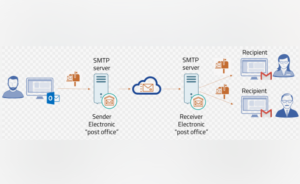Introduction
Moreover, as competition in the digital space continues to intensify, mastering the art of effective email delivery becomes even more imperative. By investing time and effort into inbox warmup and SMTP testing, you will not only guarantee that your emails will go straight into the inbox of recipients but also save the good reputation and trustworthiness of your brand. This is an indication of your commitment to giving out valuable information and building genuine relationships with readers. In the present society, where individuals barely have time to engage in anything due to a short attention span and high competition, email marketing success can be improved by focusing on inbox warmup as well as SMTP testing solutions, thus enabling them to stay ahead of others.
What is Inbox Warmup?
Inbox warm-up involves gradually increasing the volume of emails sent from a new or underutilized IP address. The goal is to establish a positive reputation with ISPs and email clients as legitimate senders. Failing to warm up an IP address can lead to low deliverability rates, as sending large volumes of emails from a new IP may trigger spam filters.
Tips for Effective Inbox Warmup
Start Slow: Begin by sending a small volume of messages to engaged recipients or internal lists. This allows ISPs to monitor your sending behavior and gradually build your sending reputation.
Segment Your Audience: Divide your email list into smaller segments based on engagement levels, demographics, or past interactions. By targeting smaller, more receptive groups initially, you can customize your content and enhance engagement rates.
Monitor Metrics: Keep an eye on key metrics such as open rates, click-through rates, and spam complaints during the warmup process. Adjust your sending volume and content strategy based on these insights to optimize deliverability.
Gradually Increase Volume: As your sender reputation improves, gradually increase the volume and frequency of your email sends. However, avoid sudden spikes in volume, as this can raise red flags with ISPs and negatively impact deliverability.
What is SMTP Testing?
SMTP (Simple Mail Transfer Protocol) testing involves assessing the deliverability and performance of your email server and infrastructure. By simulating the sending and receiving of emails, SMTP tests identify potential issues such as misconfigured settings, DNS errors, or Authentication errors that could affect email deliverability.
Tips for Effective SMTP Testing
Use an SMTP Test Tool: Leveraging a dedicated SMTP test tool simplifies the testing process and provides comprehensive insights into your email infrastructure. Look for features such as real-time monitoring, diagnostic reports..
Check Authentication:Confirm that your email server is appropriately verified with SPF (Shipper Strategy Structure), DKIM (DomainKeys Recognized Mail), and DMARC (Space-Based Message Verification, Announcing, and Conformance) records. These conventions assist with validating your messages and preventing caricatures or phishing assaults.
- Understand Your Requirements: Determine what aspects of your SMTP server you need to test, such as authentication, encryption, or delivery reliability.
- Choose the Right Tools: Select reliable SMTP testing tools or services that meet your specific testing needs. Look for features like comprehensive testing options, ease of use, and compatibility with your environment.
- Test Regularly: Regularly test your SMTP server to ensure it’s functioning properly and meeting your requirements. This helps identify any issues early on and allows for timely troubleshooting.
- Monitor Performance: Monitor the performance of your SMTP server during testing, paying attention to factors like delivery speed, error rates, and message queue management. This helps identify any performance bottlenecks or issues that need to be addressed.



